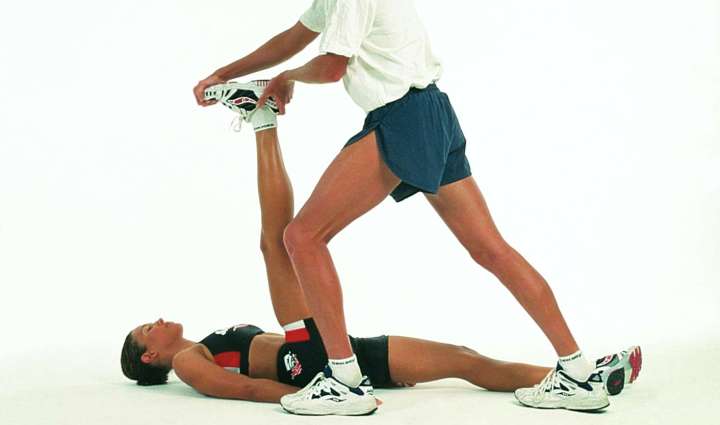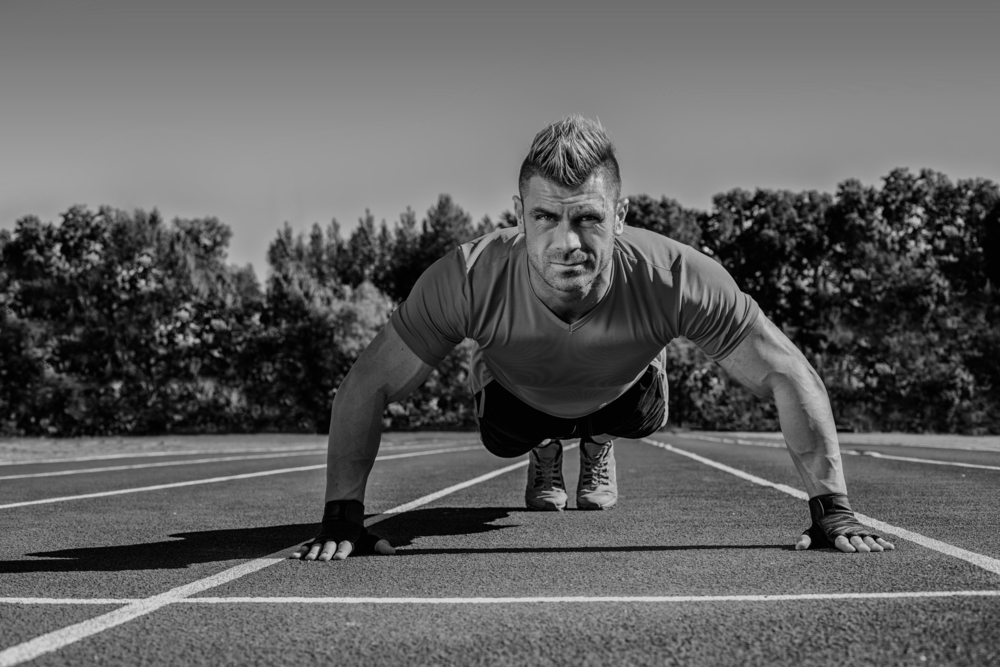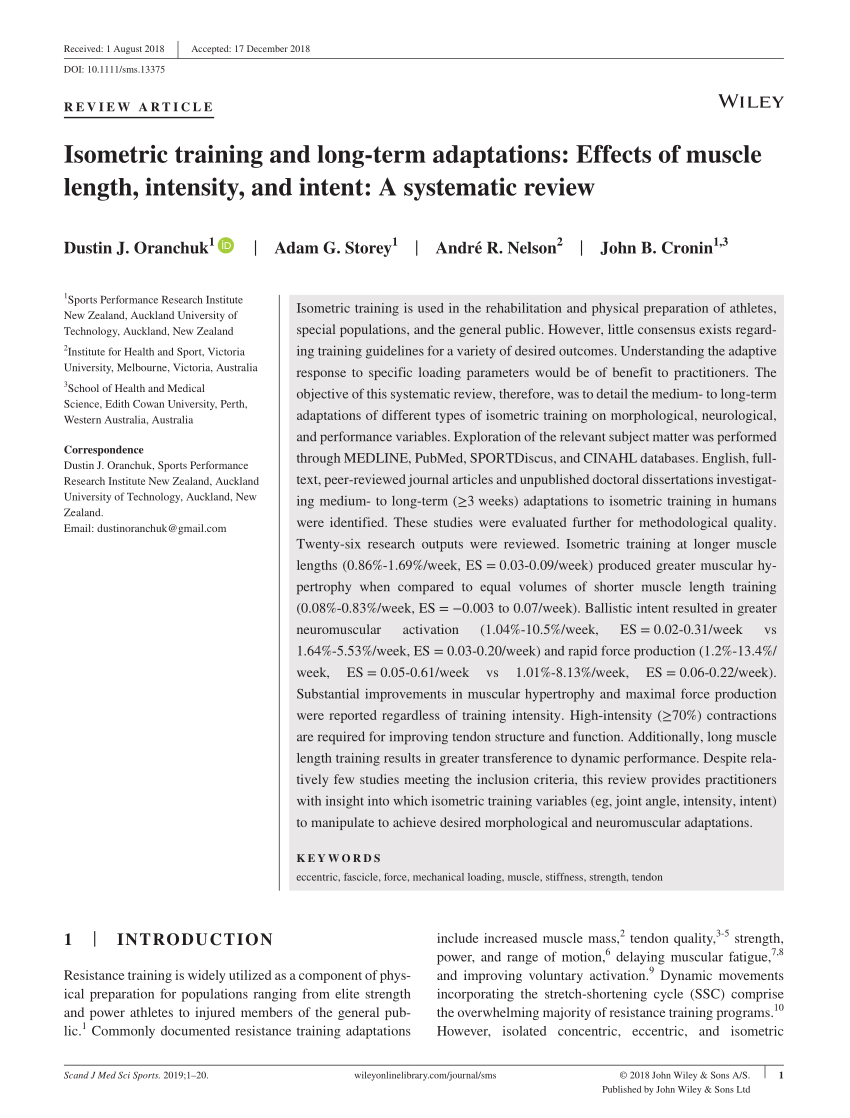Slow Eccentrics
Here are some of the thing we know, about Eccentrics...
Strength and Hypertrophy is develop to a much greater degee with a Faster Eccenntric than a Slow Eccentric Action.
Short-term high- vs. low-velocity isokinetic lengthening training results in greater hypertrophy of the elbow flexors in young men
https://www.physiology.org/doi/pdf/10.1152/japplphysiol.01027.2004
.
..higher velocity (3.66 rad/s)
isokinetic lengthening contractions are associated with greater muscular hypertrophy than slower (0.35 rad/s)
velocity lengthening contractions.
We observed, despite a >10-fold lower mean torque-time integral (Fig. 6),
a greater degree of hypertrophy (Fig. 3)
with a training protocol that involved only high velocity lengthening contractions.
Fiber type-specific changes after eccentric training
https://www.patreon.com/posts/fiber-type-after-28196633
Not every type of eccentric training causes preferential increases in type II muscle fiber area, and some types actually cause type I muscle fiber area to increase more!
#2. Preferential type I muscle fiber hypertrophy
...when
slow eccentric phases are used during normal strength training,
this causes increased type I muscle fiber size, ...
Slowing down and eccentric does not enhancement or recruitment so it is not "eccentric overload". It only increases time under tension.
Research shows the slow negatives do not elicit the most effective response.
Slow eccentrics for growth? - Dan Ogborn
Dan Osborne found that with eccentrics/negatives are....
1)
"...greater following high rather than slow velocity eccentric actions (29)."
2)
"...as far as strength was concerned, fast eccentric actions were superior."
3)
"...growth of type IIa and IIx fibres was greater with fast eccentric actions."
Negatives: You're Doing Them Wrong
https://www.t-nation.com/training/ne...ing-them-wrong
As per Chris Thibaudeau...
1) ...
"going slower will not improve the stimulatory affect of the eccentric. ...
it won't recruit and stimulate more fast-twitch fibers."
2)
"The Essential Points: Focus on heavy and controlled, not on moderate weights lowered slowly."
What Research Information
Sound interesting. Please post some of the reasearch data that goes into that
Stretching For Hypertropy
Yes, Stretching can assist with Hypertrophy.
1)
Stretching Between Sets Boosts Muscle Growth
A completely optimized strength-training session comprehensively augments all aspects of your workout. Because resistance exercise consists of a work and rest …

articles.a1supplements.com
Dr. Michael Ruldolph
...scientific evidence indicates that certain activities, like
stretching, during the rest period could significantly contribute to the positive influence that resistance training has on muscle hypertrophy...
...scientific evidence indicates that s
tretching during the rest phase enhances the hypertrophic adaptation of the muscle.
...
stretching during the rest period positively influences muscle growth, some studies have shown that
too much stretching may have a negative impact on strength and power.
Wilson-How I Can Grow Like Crazy!
Ask The Muscle Prof: What Training Technique Produces The Craziest Muscle Growth?
Dr. Jacob Wison
The athletes began with a weight they could
lift 12-15 times until failure. However,
instead of resting between sets, they let the weight from the leg press stretch their calves for 30 seconds. They repeated this process three times, dropping the weight after each stretch.
After 5 weeks we found that the
stretching group doubled the muscle gains of the non-stretching group! Here's what we now believe to be the case:
- The key to stretch-induced growth is to create both a large amount of mechanical tension and muscle damage.
- The stretch placed upon a muscle fiber seems to be greatest after an individual has achieved significant cell swelling, or pump.
After this swelling has been increased, we believe that
intermittent stretching would have its greatest chance to work.
Putting it to work for you
As you can imagine,
stretching is a part of a normal lift. Specifically,
exercises which place a muscle in its extreme range of motion—such as incline dumbbell curls for the biceps—increase mechanical strain, and thus, hypertrophy.7
However, based on the evidence above, it seems clear to us that
some amount of weighted intermittent stretching is even more effective at increasing muscle growth, even in muscle groups as stubborn as the calves.
Loaded Stretches
Exericse that involves a Load Stretch appear elicit a greater response; such as Hanging from a Pull Up Bar, Sitting in a bottom of a Full Squat with a loaded bar on one's back, Dumbbell Bench Press with that Dumbbells at the bottom of the movement, etc.
Full Range Resistance Exercises for Repetition provide a Loaded Stretch in the bottom part of the Movement.
Stretch Time
1) Wilson recommended 30 Second Stretches.
2) Thibaudeau has recommended 45-75 Second Stretches.
Considerable Size
While Stretching appears to assist with Hypertrophy, it seems that its effectiveness is in conjunction with additional training factors. As Wilson and Thibaudea noted, after obtaining, "The Pump".
With that said, please define what connotates Considerable Size? How many inches are centimeters did you gain?
Isometrics Are Range Specific
Iisometric Strength Training produces strength to a greater degree in Specific Ranges.
Specifically, in a range that is 15% above and 15% below where the Isometric is being performed rather than the "Entire Range of the Movement".
Isometric Training: What It Is And How To Do It Correctly
Famed strongman Alexander Zass credited much of his great strength to his isometric training as a prisoner during World War I. He would push on the bars and chains that held him captive and quickly saw benefits. Not long after, he started promoting this method of training through his mail order...

breakingmuscle.com
"Mel Siff noted in his book Supertraining:
…isometric training also produces significant strength increase over a range of up to as much as 15 degrees on either side of the training angle."
The Theory And Application of Modern Strength
Chris Thibaudeau
"...Strength gained in a 20-degree range (working angle +/- 20 degrees)."
While there's a slight differences in ranges above. the point is that it is occurs in a tight range rather the Full Range of Motion.
The same is true with Partial Strength Exercises, as well.
Strength Training in a Partical Range of a Movement ensure Strength is trained and developed in that specific range.
That is the primary reason that a well written Isomtric Strength Training Program for developing Strength through the Full Range of Motion involves Isometrics performed from the Low Position of a Movement, Mid Range and the Top End.
T
he Beneifit of Specific Isometric Range Training
It allows individual to focus on developing Maximum Strength in the Sticking Point a Movement.
The Inverse Relationship
There is an Inverse Realationship between Time and Intensity.
As Time Increases, Intenstuy Decreases.
That is why a 10 second, 100 meter Track Sprinter cannot maintain that time in a 1500 meter event.
IF a Sprinter could push it that hard, 10 seconds per 100 meters for 1500 meters, they'd run the mile in 2 minutes and 30 seconds.
Thus, 5 Minutes of trying to "Pull as hard as you can" in an Isometric isn't going to happen.
Getting Some Training Effect
If your getting something out of the Extreme...great.





